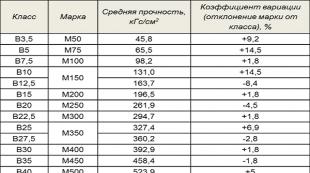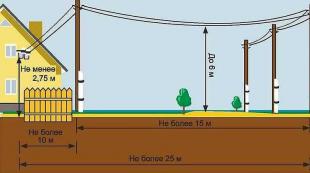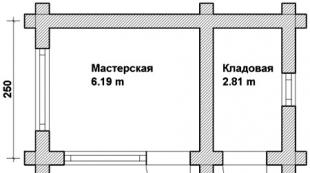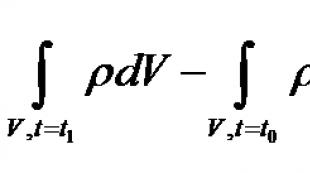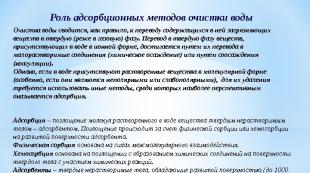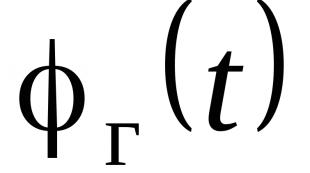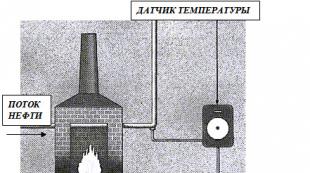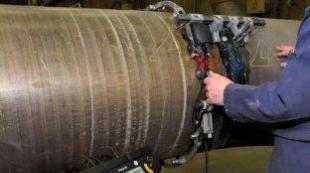Strip foundation reinforcement technology. Rules for reliable reinforcement of a strip foundation The reinforcement step of a strip foundation is meter by 40
Strip foundations are most common in the construction of private, low-rise buildings. Easy to implement, no special equipment or complex equipment required. All work can be done independently. The most important and difficult thing is to correctly reinforce the strip foundation with a width of 40 cm. We will consider what this is and how it affects the service life of the building in more detail below.
The strip foundation is the basis of the building. Its durability determines its service life, the need for repairs or additional strengthening. In order not to discover distortions in the walls in a year, two or five, not to watch how cracks “grow” under the windows, you should not neglect the reinforcement. This article will tell you how to do it correctly, what requirements need to be met.
How is reinforcement performed?
Before starting construction, you must familiarize yourself with the requirements of SNiP 2.03.01-84. It contains a direct indication that a strip foundation for a residential building cannot be without reinforcement. The width and height of the base and building do not matter.
There are two components at its core:
- concrete. Resistant to compression loads. But when the bending or tensile moment increases, the strip foundation is destroyed;
- reinforcement frame. Reduces the load on the concrete mass under the influence of bending or tensile forces. It consists of longitudinal tiers connected into a single structure by jumpers: transverse and vertical.
The number of tiers or belts directly depends on the height of the strip foundation:
- for shallow depths up to 1 meter high, 2 are enough;
- if the height exceeds 120 cm, an intermediate reinforcement belt is added.
Expert opinion
Sergey Yurievich
Ask a question to an expertThe width of the base is not taken into account. You don't have to look at her.
For longitudinal belts and lintels, the optimal material is corrugated reinforcement with a diameter of 12-16 mm. Smooth, 8-10 mm in diameter, recommended only as lintels if a strip foundation is being installed
Expert opinion
Sergey Yurievich
Construction of houses, extensions, terraces and verandas.
Ask a question to an expertFor dressing, a special knitting wire with a diameter of 1-2 mm is used. Welding is not recommended: the metal gets very hot, and “weak” spots appear at the joints, which need to be looked after especially carefully during the process of pouring concrete. If damaged, the reinforcement will not perform its function. At the same time, wire ligation is a complex and lengthy process that requires special skills. Welding is much faster.
Reinforcing frame configuration
When calculating reinforcement, the requirements of SNiP 2.03.01-84 “Manual for designing foundations for buildings and structures” must be taken into account:
- elements of the longitudinal frame of the strip base are located at a distance of 10 cm or less;
- between tiers of the frame - 50 cm or less;
- transverse vertical jumpers are located at a distance of 30 cm or less;
- from the lintels, frame contour to the formwork - at least 5 cm. Otherwise, the destruction of the concrete belt and the release of reinforcement to the surface of the strip foundation is possible;
- The lower belt should not lie on the ground. If a backfill of sand and crushed stone has not been made beforehand, a single brick or special plastic stands are placed under the tier, depending on the condition of the soil and its homogeneity.
Calculation of reinforcement for reinforcing a strip foundation 40 cm wide
It is better to calculate the required volumes before starting work, so as not to stop and look for where to urgently buy several rods or a coil of wire. In the above calculation, a conditional strip foundation with the following parameters is taken as a basis: height 70 cm, width 40 cm. The perimeter of the building is 50 meters.
Expert opinion
Sergey Yurievich
Construction of houses, extensions, terraces and verandas.
Ask a question to an expertFor a base 70 cm high, two reinforcing belts are sufficient.
Each tier has 3 rods. For connection, reinforcement with a diameter of 12 mm is used, the pitch is 30 cm.
Quantity calculations:
- laying 3 rods in 2 tiers will require 300 meters;
- 167 jumpers are planned for the entire house, placed in increments of 30 cm;
- for a vertical jumper the length is 60 cm, for a transverse one - 30 cm. Each joint requires 2 vertical and 2 horizontal jumpers.
Total: for vertical lintels you will have to purchase 200.4 meters of reinforcement, for horizontal ones - 100.2 meters. In total, the building requires at least 600.6 meters of reinforcing bars with a diameter of 12 mm. This number is not final. When placing an order, please provide a reserve in case of defects and reinforcement of corners. Take into account such parameters as the length and width of the facade, the number of meters in one rod. If possible, purchase rods that are pre-cut to size to reduce waste.
How is reinforcement performed?
For straight sections, it is important to choose whole rods. The fewer joints and connections, the stronger the strip foundation. When forming corners, overlapping of elements located perpendicularly is not allowed. The reinforcement should be bent in a “P” or “G” shape.
The frame can be assembled both directly on site, in the pit, and outside it. The first may not be very convenient due to the small space. In the second case, it is important to accurately observe all the dimensions, so as not to subsequently have to rework the frame for the strip foundation.
It is difficult, but possible, to bend the reinforcement at the required angles at home. To do this, you will need a section of channel in which holes are cut with a grinder strictly on the same line. The reinforcement rod is placed in the grooves. A steel pipe is placed on the long end and used as a lever. Bending requires a lot of effort, but allows you to do without purchasing a sheet bender. The ligation of the rods is done with wire.
The rods prepared for reinforcement are laid in the trench in accordance with the requirements described above after the formwork is installed. The tiers are strictly horizontal to the ground. At the next stage, when all the belts are installed and tied, you can proceed to pouring concrete. It is important to ensure that the reinforcement remains in place and does not move. For a private low-rise building, the optimal grade of concrete is M200. After curing in accordance with building regulations, the strip foundation will gain strength and will be ready for further use. Concrete should be covered with an opaque film for 28 days, protected from direct sunlight and periodically moistened with water.
Expert opinion
Sergey Yurievich
Construction of houses, extensions, terraces and verandas.
Ask a question to an expertTo avoid problems associated with soil heaving, before reinforcement, the bottom of the trench is filled with layers of sand and crushed stone of at least 10 cm each. Otherwise, the strip foundation will not withstand numerous freezing/thawing cycles.
The strip foundation has a non-standard geometry: its length is tens of times greater than its depth and width. Due to this design, almost all loads are distributed along the belt. A concrete stone cannot compensate for these loads on its own: its bending strength is not enough. To give a structure increased strength, not just concrete is used, but reinforced concrete - this is a concrete stone with steel elements located inside - steel reinforcement. The process of laying metal is called strip foundation reinforcement. It’s not difficult to do it with your own hands, the calculations are elementary, the diagrams are known.
The quantity, location, diameters and type of reinforcement - all this must be specified in the project. These parameters depend on many factors: both on the geological situation on the site and on the mass of the building being constructed. If you want to have a guaranteed strong foundation, you need a project. On the other hand, if you are building a small building, you can try, based on general recommendations, to do everything yourself, including designing a reinforcement scheme.
Reinforcement scheme
The location of the reinforcement in the strip foundation in cross section is a rectangle. And there is a simple explanation for this: this scheme works best.
Reinforcement of a strip foundation with a strip height of no more than 60-70 cm
There are two main forces acting on the strip foundation: heaving forces press from below during frost, and the load from the house from above. The middle of the tape is almost not loaded. To compensate for the action of these two forces, two belts of working reinforcement are usually made: above and below. For shallow and medium deep foundations (up to 100 cm deep) this is enough. For deep belts, 3 belts are already required: too high a height requires reinforcement.

To ensure that the working fittings are in the right place, they are secured in a certain way. And they do this using thinner steel rods. They do not participate in the work, they only hold the working reinforcement in a certain position - they create a structure, which is why this type of reinforcement is called structural.

As can be seen in the strip foundation reinforcement diagram, the longitudinal reinforcement bars (working) are tied with horizontal and vertical supports. They are often made in the form of a closed loop - a clamp. It’s easier and faster to work with them, and the design is more reliable.
What fittings are needed
For strip foundations, two types of rods are used. For longitudinal ones that bear the main load, class AII or AIII is required. Moreover, the profile is necessarily ribbed: it adheres better to concrete and transfers load normally. For structural lintels, cheaper reinforcement is used: smooth first class AI, 6-8 mm thick.
Recently, fiberglass reinforcement has appeared on the market. According to manufacturers, it has better strength characteristics and is more durable. But many designers do not recommend using it in the foundations of residential buildings. According to the standards, it must be reinforced concrete. The characteristics of this material have long been known and calculated; special reinforcement profiles have been developed that ensure that metal and concrete are combined into a single monolithic structure.

How concrete will behave when paired with fiberglass, how firmly such reinforcement will adhere to concrete, how successfully this pair will resist loads - all this is unknown and has not been studied. If you want to experiment, please use fiberglass. No - take iron fittings.
Do-it-yourself calculation of strip foundation reinforcement
Any construction work is regulated by GOSTs or SNiPs. Reinforcement is no exception. It is regulated by SNiP 52-01-2003 “Concrete and reinforced concrete structures”. This document specifies the minimum amount of reinforcement required: it must be at least 0.1% of the cross-sectional area of the foundation.
Determination of reinforcement thickness
Since the strip foundation in section has the shape of a rectangle, the cross-sectional area is found by multiplying the lengths of its sides. If the tape has a depth of 80 cm and a width of 30 cm, then the area will be 80 cm * 30 cm = 2400 cm 2.
Now you need to find the total area of the reinforcement. According to SNiP it should be at least 0.1%. For this example it is 2.8 cm 2. Now, using the selection method, we will determine the diameter of the rods and their number.

Quotes from SNiP that relate to reinforcement (to enlarge the picture, right-click on it)
For example, we plan to use reinforcement with a diameter of 12 mm. Its cross-sectional area is 1.13 cm 2 (calculated using the formula for the area of a circle). It turns out that in order to provide recommendations (2.8 cm 2), we will need three rods (or they also say “threads”), since two are clearly not enough: 1.13 * 3 = 3.39 cm 2, and this is more than 2.8 cm 2, which are recommended by SNiP. But it will not be possible to divide three threads into two belts, and the load on both sides will be significant. Therefore, they stack four, laying a solid margin of safety.
In order not to bury extra money in the ground, you can try to reduce the diameter of the reinforcement: calculate it at 10 mm. The area of this rod is 0.79 cm 2. If we multiply by 4 (the minimum number of working reinforcement bars for a strip frame), we get 3.16 cm 2, which is also enough with a margin. So for this version of the strip foundation, you can use class II ribbed reinforcement with a diameter of 10 mm.

Reinforcement of a strip foundation for a cottage is carried out using rods with different types of profiles
Installation step
There are also methods and formulas for all these parameters. But for small buildings it’s simpler. According to the recommendations of the standard, the distance between horizontal branches should not be more than 40 cm. This parameter is used as a guide.
How to determine at what distance to lay reinforcement? To prevent steel from corroding, it must be embedded in concrete. The minimum distance from the edge is 5 cm. Based on this, the distance between the rods is calculated: both vertically and horizontally it is 10 cm less than the dimensions of the tape. If the width of the foundation is 45 cm, it turns out that between the two threads there will be a distance of 35 cm (45 cm - 10 cm = 35 cm), which corresponds to the standard (less than 40 cm).

The reinforcement step of a strip foundation is the distance between two longitudinal bars
If our tape is 80*30 cm, then the longitudinal reinforcement is located one from the other at a distance of 20 cm (30 cm - 10 cm). Since medium-level foundations (up to 80 cm in height) require two reinforcement belts, one belt from the other is located at a height of 70 cm (80 cm - 10 cm).
Now about how often to install jumpers. This standard is also in SNiP: the installation step of vertical and horizontal dressings should be no more than 300 mm.
All. We calculated the reinforcement of the strip foundation with our own hands. But keep in mind that neither the mass of the house nor the geological conditions were taken into account. We relied on the fact that these parameters were based on .
Corner reinforcement
In the design of a strip foundation, the weakest point is the corners and the junction of the walls. In these places loads from different walls are combined. In order for them to be successfully redistributed, the reinforcement must be properly tied. Simply connect it incorrectly: this method will not ensure load transfer. As a result, after some time, cracks will appear in the strip foundation.

The correct scheme for reinforcing corners: either bends are used - L-shaped clamps, or longitudinal threads are made 60-70 cm longer and bent around the corner
To avoid this situation, when reinforcing corners, special schemes are used: the rod is bent from one side to the other. This “overlap” should be at least 60-70 cm. If the length of the longitudinal rod is not enough to bend, use L-shaped clamps with sides also at least 60-70 cm. Schemes of their location and fastening of the reinforcement are shown in the photo below.
The abutments of piers are reinforced using the same principle. It is also advisable to take the reinforcement with a reserve and bend it. It is also possible to use L-shaped clamps.

Reinforcement diagram for adjacent walls in a strip foundation (to enlarge the picture, right-click on it)
Please note: in both cases, in the corners, the installation step of the transverse jumpers is reduced by half. In these places they already become workers - they participate in the redistribution of the load.
Reinforcement of the base of a strip foundation
On soils with not very high bearing capacity, on heaving soils or under heavy houses, strip foundations are often made with a sole. It transfers the load to a larger area, which gives greater stability to the foundation and reduces the amount of subsidence.
To prevent the sole from falling apart under pressure, it also needs to be reinforced. The figure shows two options: one and two belts of longitudinal reinforcement. If the soils are complex, with a strong tendency to winter baking, then two belts can be laid. For normal and medium-heaving soils, one is enough.
Reinforcement rods laid lengthwise are working. They, as for the tape, are taken in second or third class. They are located at a distance of 200-300 mm from each other. They are connected using short pieces of rod.

Two methods of reinforcing the base of a strip foundation: on the left for foundations with normal bearing capacity, on the right for not very reliable soils
If the sole is not wide (rigid design), then the transverse segments are structural and do not participate in load distribution. Then they are made with a diameter of 6-8 mm, bent at the ends so that they cover the outer rods. They are tied to everyone using a binding wire.
If the sole is wide (flexible), the transverse reinforcement in the sole is also working. She resists the soil’s attempts to “collapse” her. Therefore, in this version, the soles use ribbed reinforcement of the same diameter and class as the longitudinal one.
How much rod do you need?
Having developed a strip foundation reinforcement scheme, you know how many longitudinal elements you need. They are laid around the entire perimeter and under the walls. The length of the tape will be the length of one reinforcement rod. By multiplying it by the number of threads, you get the required length of the working reinforcement. Then add 20% to the resulting figure - a margin for joints and overlaps. This is how much in meters you will need working reinforcement.

Now you need to calculate the amount of structural reinforcement. Calculate how many crossbars there should be: divide the length of the tape by the installation pitch (300 mm or 0.3 m, if you follow the recommendations of SNiP). Then you calculate how much it takes to make one lintel (add the width of the reinforcement cage with the height and double it). Multiply the resulting figure by the number of jumpers. You also add 20% to the result (for connections). This will be the amount of structural reinforcement to reinforce the strip foundation.
Using a similar principle, you calculate the amount needed to reinforce the sole. Putting everything together, you will find out how much reinforcement is needed for the foundation.
Technologies for assembling reinforcement for strip foundations
Do-it-yourself reinforcement of the strip foundation begins after installation. There are two options:

Both options are imperfect and everyone decides how it will be easier for him. When working directly in a trench, you need to know the procedure:
- The longitudinal rods of the lower reinforced belt are laid first. They need to be raised 5 cm from the edge of the concrete. It is better to use special legs for this, but pieces of bricks are popular among developers. The reinforcement is also 5 cm away from the formwork walls.
- Using transverse pieces of structural reinforcement or molded contours, they are fixed at the required distance using tying wire and a hook or a tying gun.
- Then there are two options:
- If contours formed in the form of rectangles were used, the upper belt is immediately tied to them at the top.
- If during installation you use cut pieces for crossbars and vertical posts, then the next step is tying up the vertical posts. After they are all tied, a second belt of longitudinal reinforcement is tied.
There is another technology for reinforcing strip foundations. The frame turns out to be rigid, but there is a large consumption of rods for the vertical posts: they are driven into the ground.

The second technology for reinforcing a strip foundation is to first drive in vertical posts, tie longitudinal threads to them, and then connect everything with transverse ones
- First, vertical posts are driven in at the corners of the tape and at the junction of horizontal rods. The racks should have a large diameter of 16-20 mm. They are placed at a distance of at least 5 cm from the edge of the formwork, checking horizontal and vertical, and driven into the ground 2 meters.
- Then vertical rods of the calculated diameter are driven in. We determined the installation pitch: 300 mm, in the corners and at the junctions of the walls it is half as much - 150 mm.
- The longitudinal threads of the lower reinforcement belt are tied to the posts.
- At the intersection of the racks and longitudinal reinforcements, horizontal jumpers are tied.
- The upper reinforcement belt is tied, which is located 5-7 cm below the upper surface of the concrete.
- Horizontal jumpers are tied.
It is most convenient and quick to make a reinforcing belt using pre-formed contours. The rod is bent to form a rectangle with the specified parameters. The whole problem is that they need to be made identical, with minimal deviations. And a large number of them are required. But then the work in the trench moves faster.

As you can see, reinforcing a strip foundation is a lengthy and not the easiest process. But you can cope even alone, without helpers. It will take a lot of time, though. It’s easier to work with two or three people: both carry the rods and set them out.
Reinforcement is a construction process that is used to enhance the durability of a structure and increase its service life. It represents the formation of a prefabricated skeleton, acting as a protective component that resists the impact of soil on the walls of the structure.
To achieve maximum results, you should clearly calculate how much reinforcement is needed, as well as accurately reinforce the building’s foundation.
Correct reinforcement of a strip foundation with your own hands
At the base of the foundation, the primary component is a concrete mixture formed from cement, sifted sand and clean water. Since this solution does not have sufficient physical characteristics that can provide a guarantee against various types of deformations in the foundation of the structure, metal is additionally used.
It allows you to increase the degree of resistance to base shifts, sudden temperature changes and other negatively affecting factors. The metal itself is plastic, but it is capable of providing decent fixation, so reinforcement is an important and necessary process in the entire construction complex.
Reinforcement should be carried out only in places where there is a high degree of vulnerability to tension. Most often it occurs on the surface, so it is imperative to reinforce the upper level of the base. In order to avoid corrosion of the material, it should be protected with a layer of concrete mortar.
The acceptable distance of the reinforcing belt from the surface should be about 5 cm.
Possible deformation zones:
- the lower part, when there is a downward bending of its middle;
- the upper part is the arching of the frame upward.
For the middle level of the base, reinforcement is not necessary, since there is practically no tension in this zone.
Taking into account possible deformation options, it is imperative to reinforce the bottom and top using reinforcement with a ribbed surface and a diameter in the range of 10–12 mm. In this option, the closest contact with the concrete solution is observed. Other skeletal elements may be small in diameter and have a smooth surface.
If a foundation with a width of up to 40 cm is being reinforced, 4 reinforcement rods with a diameter of 10–16 mm are used, which are connected into a frame with a diameter of 8 mm.
The long-length tape type of base has a relatively small width, which is why it can only contain longitudinal stretches without transverse ones. Therefore, in this situation, it is best to use smooth and thin rods to form a frame, and not to carry heavy loads on the base.
Most attention should be paid to the reinforcement of corners, since in many cases deformations occur in this part of the structure. Reinforcement of the corners of the structure must be carried out so that one of the ends of the bent metal goes into one wall, and the other into another. Since not every reinforcement material can be welded, it is better to fasten the elements together using wire.
Rules for correct reinforcement of a strip foundation:
- The work begins with the installation of formwork, which is lined with parchment on the inside. This procedure allows you to quickly disassemble the created structure in the future.
- Then you should drive the reinforcing bars into the ground trenches at a distance of 5 cm from the formwork and in increments of 40–60 cm. The length of the rods should be equal to the depth of the foundation.
- A stand measuring 8–10 cm is placed at the bottom of the trench, and 2 or 3 threads of a row of reinforcement are formed on top of it. As a stand, you can use an ordinary brick laid on its edge.
- Upper and lower chord made of reinforcement with cross connections attached to vertical rods.
- In places where elements intersect, it is necessary to fasten with wire or welding.
Be sure to maintain the distance to the future surface of the foundation; you can use bricks for this.
- Installing the fittings, ventilation holes should be made and concrete should be poured.
The presence of ventilation holes and holes increases shock absorption and prevents the occurrence of rot.
The ideal option is to use a diagram for a strip foundation, consisting of primitive geometric shapes, such as a square or rectangle, then the frame is easier to mount correctly, and the resulting foundation is more reliable and strong.
Basic mistakes in reinforcing strip foundations
The most famous and frequently made mistakes:

It is forbidden to close the vents for the winter, as this leads to a lack of ventilation and rotting of the structure.
Why do you need reinforcement in a strip foundation?
Over time, any house will experience subsidence, as the soil under the base yields to pressure from above and becomes compacted. The more pressure is put on it, the stronger and faster it compacts. If the resulting pressure is distributed evenly over the entire area of the strip foundation, then this is not a particular problem.
As a rule, in real conditions the pressure on the foundation is not symmetrical, which is why the building settles unevenly. To avoid such a problem, tapes of various widths are used in the foundation, but even this technique does not always help eliminate and equalize the pressure on the foundation.
Uneven settlement of the foundation is caused by:
- Various soil inclusions.
- Uneven and inconsistent humidity.
- Various additions and extensions.
- Leakage of water-carrying communications.
- Absence of a blind area on any side, etc.
Under the influence of these causes of settlement, the soil surface under the foundation becomes curved relative to the vertical direction of the building. The corners of the structure and areas with large load differences are most affected.
In such a situation, internal tension arises in the foundation strip, which contributes to the occurrence of bending moments and cracks. To eliminate unwanted pressure on the foundation and reduce the number of cracks and bends, reinforcement is added inside the foundation.
What reinforcement is needed for the foundation?
There are two options used in the construction of reinforcement:
- Steel, which is divided into:
- core;
- wire
- Composite reinforcement. It is used relatively rarely due to its characteristic disadvantages.
To reinforce a strip-type foundation, rod reinforcement is used as the main (working) material and smooth reinforcement as an additional one.
The main property for working reinforcement is the ability to quickly and well adhere to concrete. This type of reinforcement is produced with a periodic profile, dividing it into classes according to strength indicators.
According to GOST, which existed during the USSR period, for private types of construction, class A-ΙΙΙ reinforcement or an analogue of A400 (according to modern GOST) is used. For transverse reinforcement, a smooth rod of class A-Ι or A240 (modern GOST) is used.
There is a difference between the old and modern fittings in the form of a modified crescent-shaped profile; in other aspects there are no differences.
To choose the right reinforcement for the foundation in the store, you just need to pay attention to the designations:
- Index C indicates that the reinforcing bars are weldable;
- Index K indicates that the reinforcement is resistant to corrosion cracking processes that arise due to pressure on the foundation.
If these indices are not on the packaging, it is better not to buy such similar material.
Structural requirements for strip foundations and their reinforcement
Due to the inability to accurately calculate the diameter for a strip foundation, special design requirements for its reinforcement were developed:

How much reinforcement is needed for a strip foundation?
For the foundation, reinforcement with a small diameter is used, for example, for low-rise construction, reinforcement with a diameter of 10–12 mm is used, somewhat less often - 14 mm.
Regardless of the height of the base for reinforcement, you will need to make two belts of class A3 ribbed reinforcement at a distance of 5 cm from the bottom and top of the foundation. Transverse and vertical rods can be made of smooth type A1 class reinforcement.
For a foundation width of about 40 cm, it is sufficient to use 4 longitudinal reinforcement bars, of which two are located at the bottom and two at the top. If the width of the foundation is more than 40 cm or construction is carried out on moving soils, more rods should be used, approximately 3 - 4 for the upper and the same number for the lower chord.
To calculate the amount of required reinforcement, there are two methods:
Self-calculation
Example. The length of the foundation for a 6 by 10 m building with two walls will be 48 meters (6+10+6+10+6+10=48m).
If the width of the base is 60 cm, and the reinforcement consists of 6 longitudinal rods, then their length will be 288 meters (6*48=248m).
The step between the transverse and vertical rods is maintained at 0.5 m, the width of the foundation is 60 cm, the height is 1.9 m, the distances of the rods from the frame are 5 cm.
In this case, the length of smooth reinforcement with a diameter of 6 mm for each connection is 640 cm or 6.4 m ((60-5-5)*2+(190-5-5)*3=640 cm), and the connections will be 97 pieces (48/0.5+1=97 pieces), they will require 620.8 meters of reinforcement (97*6.4=620.8 m).
Each connection requires 6 crossings for tying reinforcement and approximately 12 pieces of tying wire. One bundle requires 30 cm of wire. Based on these data, the total wire consumption will be 349.2 m (0.3*12*97=349.2 m).
Use of reinforcement factor
For buildings with a small number of storeys, there is an indicator for the amount of reinforcement already established by the builders, which is 80 kg/m3.
Example. If 20 m3 of concrete solution is needed for the foundation, then 20*80=1600 kg of reinforcement will be needed. Calculating concrete is not difficult, you just need to know the perimeter of the house, the length of the internal walls, set the height of the tape to 30 cm and multiply it by the width.
To make the calculation more economical, it is best to make a more accurate calculation of the required amount of reinforcement by drawing a reinforcement diagram. And then, having calculated the moldings for longitudinal and transverse reinforcement, vut, and also adding to this approximately 10%, which will be spent on trimmings, multiply the result by the weight of a linear meter for each of the reinforcement diameters used.
Reinforcement of a strip foundation - knit or weld?
Metal rods can be connected to each other into a frame by knitting or welding. Each option has its own positive and negative qualities.
The main disadvantage of welding is the inability to make a high-quality transverse connection using a hand electrode. In factories, frames and meshes are connected using contact rather than arc welding.
In this regard, insufficiently strong connections (lack of penetration) or weakening of the longitudinal rod (undercut) are very often observed. Also, a big disadvantage of welding is that not all materials can be welded, for example, class A3 reinforcement is made from 35GS steel, which cannot be welded.
Also, if you take into account that welding requires the apparatus itself, knowledge, the ability to use it, as well as electricity consumption, then knitting is given more advantages in construction.
Knitting is carried out using wire with a diameter of 0.8–3 mm, and a special crochet hook is used as a tool. The only drawback of this connection option is its high labor intensity.
What materials are used for reinforcement?
The following materials are required for reinforcement:
- Steel or composite reinforcement, the rods of which are made of fiberglass or metal.
- Clamping tool(crochet hook).
- Steel wire(tightening clamps) for knitting. For metal with index C, welding can be used. In this case, a welding machine is required.
- Hacksaw for metal etc.
Proper reinforcement of a strip foundation will strengthen the building for many years, reduce the number of cracks in the foundation and walls, and also protect the structure from settlement.
(MZLF) and him.
It would be very interesting to know the opinions of experts on what is true and what is not, possible changes.
Data: First there is 40 cm of fertile layer, then the soil is loam. Groundwater level is low
(because there is a quarry 1 km away - it’s dry there). Installation of foundation insulation and its waterproofing in Fig. 2.
The house is made of porous blocks, one-story, without a basement or basement.
The weight of the house with the foundation is 220 tons. The area of the foundation base is 31.88 m2.
The load of a house with a foundation is 0.69 kg/cm2 on the ground.
The load of the house on the foundation is 0.49 kg/cm2.
Calculation of the approximate load of the house per linear meter of foundation is 2.37 tons/l.m.
Foundation: Concrete M300, Reinforcement in Fig. 1. All connections are made with plastic clamps. The overlap of horizontal working reinforcements is 30 cm, also attached to plastic clamps.
In corner and T-shaped connections, reinforcement of the nodes is additionally used.
Does such a design have a right to life?
There is also a request to evaluate the drainage arrangement.
Please tell me if the following steps for installing drainage and insulating the foundation are correct
1) A pit measuring 16 x 9 meters and 40 cm deep is dug (the fertile layer is removed). The foundation itself measures 15 x 8 meters.
2) Under the foundation strip we dig a trench 40 cm deep and 80 cm wide.
3) Geotextile is laid at the bottom of the trench, so that the edges (side walls) of the trenches are also covered with geotextile (on the inside of the foundation - completely, on the outside - half).
4) The first layer of cushion, coarse sand or SGS (sand and gravel mixture) 20 cm thick is poured onto the geotextile into the trench, then thoroughly compacted with a vibrating plate.
5) The second layer of the cushion, 20 cm thick, is filled with crushed stone/gravel (or ASG), then thoroughly compacted with a vibrating plate.
6) Next comes the formation of the foundation. After the foundation has been poured and gained strength, the formwork will be removed, leaving a layer of roofing felt under the bottom of the foundation (it is necessary so that the cement laitance does not go into the cushion).
7) A layer of foundation waterproofing is applied.
8) Attached to waterproofing Thermal insulation of the foundation made of extruded polystyrene foam ursa xps, thickness 5 cm, for the entire height of the foundation.
9) In the second layer of the cushion, at a distance of 10–15 cm from the foundation, a trench 10–15 cm wide is dug, and a drainage pipe with perforation, wrapped in geotextile below the foundation level, is laid in it.
10) A protective drainage layer (membrane) is attached to the foundation insulation below the zero mark. The lower edge goes under the drainage pipe. Then the pipe is backfilled to the top level of the second layer of fill.
11) from the outside, between the foundation and the edge of the pit, backfilling of ASG with a thickness of 30 cm is carried out, after which it is carefully compacted with a vibrating plate.
12) A sand leveling layer of coarse fraction is poured onto the ASG and compacted.
13) Insulation is laid on the leveled layer of sand made of extruded polystyrene foam ursa xps thickness 5 cm.
14) A coarse sand leveling layer is poured onto the insulation and compacted.
15) A concrete blind area with a reinforced mesh is poured onto the leveled layer of sand.
16) Tiles for drainage are laid on the leveled layer of sand, flush with the winding.
17) The internal space of the foundation is filled with coarse sand with a thickness of 10 cm.
18) Expanded clay 20 cm thick is poured on top of the sand for insulation.
Foundation reinforcement is a process necessary to strengthen the structure and increase the service life of the building. In other words, this is an assembly of a “skeleton” that plays the role of a protective component that restrains soil pressure on the walls of the base. But in order for this function to be implemented to the maximum extent, it is necessary not only to correctly calculate the reinforcement for a strip foundation, but also to know how to organize the progress of construction work.
The basis of a strip foundation is a concrete solution consisting of cement, sand and water. Unfortunately, the physical characteristics of the building material do not guarantee the absence of deformation of the base of the building. To increase the ability to withstand foundation shifts, temperature changes and other negative factors, the presence of metal in the structure is necessary.
This material is plastic, but provides reliable fixation, so reinforcement is an important stage in the complex of works.
Reinforcement for strip foundation - steel bar with stiffeners
Foundation reinforcement is required in areas where tension zones may occur. It is noted that the greatest tension appears on the surface of the base, which creates the prerequisites for reinforcement close to the upper level. On the other hand, in order to avoid corrosion of the frame, it must be protected from external influences by a layer of concrete.
Important! The optimal distance of reinforcement for the foundation is 5 cm from the surface.
Since the progression of deformation cannot be predicted, stretch zones can appear both in the lower part (when the middle bends down) and in the upper part (when the frame bends upward). Based on this, reinforcement should pass from below and above with reinforcement with a diameter of 10-12 mm, and this reinforcement for a strip foundation should have a ribbed surface.
This ensures perfect contact with the concrete.

Strip foundation stretch zones
The remaining parts of the skeleton (horizontal and vertical transverse rods) may have a smooth surface and a smaller diameter.
When reinforcing a monolithic strip foundation, the width of which usually does not exceed 40 cm, it is allowed to use 4 reinforcement rods (10-16 m), connected into a frame with a diameter of 8 mm.
Important! The distance between the horizontal rods (with a width of 40 cm) is 30 cm.
The strip foundation, although long, has a small width, so longitudinal tensions will appear in it, while there will be no transverse ones at all. It follows from this that transverse vertical and horizontal rods, which will be smooth and thin, are needed only to create a frame, and not to bear loads.

Particular attention must be paid to corner reinforcement
Particular attention must be paid to the reinforcement of corners: there are often cases when deformation occurs not in the middle, but in the corner parts. The corners should be reinforced so that one end of the bent reinforcement element goes into one wall, and the other into the other.
Experts advise connecting rods using wire. After all, not every type of reinforcement is made from steel that can be welded. But even if welding is permissible, problems often arise that can be avoided by using wire, for example, overheating of the steel, leading to a change in properties, thinning of the rod at the welding site, insufficient strength of the weld, etc.
Reinforcement structure construction diagram
Reinforcement begins with the installation of formwork, the inner surface of which is lined with parchment, making it easier to remove the structure in the future. The frame is created according to the following scheme:
1. Reinforcing bars with a length equal to the depth of the foundation are driven into the trench soil. A distance from the formwork of 50 mm and a pitch of 400-600 mm should be maintained.
2. Stands (80-100 mm) are installed at the bottom, on which 2-3 threads of the bottom row of reinforcement need to be laid. Bricks placed on edge will work well as stands.
3. The upper and lower rows of reinforcement are secured together with the transverse jumpers to the vertical pins.
4. At intersections, fastening is carried out using wire tying or welding.
The video will introduce you to a convenient way to knit reinforcement using a template:
Important! The distance to the outer surfaces of the future foundation should be strictly observed. It is better to do this with the help of bricks. This is one of the most important conditions, because metal structures should not be based directly on the bottom. They must be raised above ground level by at least 8 cm.

After installing the reinforcement, all that remains is to make ventilation holes and pour concrete mortar.
You need to know this!
Ventilation holes not only help to increase the depreciation characteristics of the foundation, but also prevent the occurrence of putrefactive processes.
Calculation of material consumption
To calculate a strip foundation, you need to know some parameters in advance. Let's look at an example. Suppose our foundation has a rectangular shape and the following dimensions: width - 3.5 meters, length - 10 meters, casting height - 0.2 meters, belt width - 0.18.
First of all, you need to calculate the total volume of the casting, for which you need to find out the dimensions of the base as if it had the shape of a parallelepiped. To do this, we will perform several simple manipulations: find out the perimeter of the base, and then multiply the perimeter by the width and height of the casting.
P = AB + BC + CD + AD = 3.5 + 10 = 3.5 + 10 = 27
V = 27 x 0.2 x 0.18 = 0.972
But the calculation of a monolithic foundation does not end there. We learned that the base itself, or rather the casting, occupies a volume approximately equal to 0.97 m3. Now you need to find out the volume of the internal part of the foundation, i.e. what is inside our feed.
We get the volume of the “filling”: multiply the width and length of the base by the height of the casting and find out the total volume:
10 x 3.5 x 0.2 = 7 (cubic meters)
Subtract the volume of the casting:
7 – 0.97 = 6.03 m3
Result: casting volume - 0.97 m3, internal filler volume - 6.03 m3.
Now you need to calculate the amount of reinforcement. Let's say the diameter will be 12 mm, the casting will have 2 horizontal threads, i.e. 2 rods, and vertically, for example, the rods will be located every half a meter. The perimeter is known - 27 meters. This means we multiply 27 by 2 (horizontal rods) and get 54 meters.
Vertical rods: 54/2 + 2 = 110 rods (108 0.5 m intervals and two at the edges). We add one more rod per corner and we get 114 rods.
Let's say the height of the rod is 70 cm. It turns out: 114 x 0.7 = 79.8 meters.
The final touch is the formwork. Suppose we build it from boards 2.5 cm thick, 6 meters long and 20 cm wide.
We calculate the area of the side surfaces: multiply the perimeter by the height of the casting, and then by 2 (with a margin, not taking into account the decrease in the internal perimeter versus the external): (27 x 0.2) x 2 = 10.8 m2
Board area: 6 x 0.2 = 1.2 m2; 10.8/1.2 = 9
We need 9 boards 6 meters long. Don't forget to add connection boards (optional).
Result: 1 m3 of concrete will be required; 6.5 m3 of aggregate; 134 meters of reinforcement and 27 linear meters of boards (20 cm wide), screws and bars. The values given have been rounded.

The results of painstaking calculation work
Now you know not only how to properly reinforce a strip foundation, but also how to calculate the necessary components. This means that the foundation you build will be reliable and strong, allowing the construction of monolithic structures of any configuration.

